2594 Tue & 2595 17 & 18 Apr 2018 LESSONS
https://m.youtube.com/watch?v=HprQbTlYHuQ
AR 101:
The Basics of Augmented Reality
Published on Dec 16, 2016
What exactly is augmented reality?
Senior Writer Jonathan Strickland explains what AR is all about and how using digital information in the physical world can transform reality around you.




Buddha


Buddha

 Buddha
Buddha

 Buddha
Buddha

 Buddha
Buddha

 Buddha
Buddha

 Buddha
Buddha

 Buddha
Buddha

 Buddha
Buddha

 Buddha
Buddha


Buddha

 Buddha
Buddha

 Buddha
Buddha
https://m.youtube.com/watch?v=I3R8FV60vgI
Buddha Virtual Reality Demo Video Augmented Reality Demo
https://haptic.al/virtual-reality-meets-tibetan-buddhism-d06f28dde66e
Virtual reality meets Tibetan Buddhism
Your weekly guide to Virtuality — Newsletter #65
https://cdn-images-1.medium.com/max/1600/1*zL39RQ9oA2V3PlqkonbeGA.jpeg
What do dreams and video games have to do with Tibetan Buddhism? For one thing, they all introduce us to “dereification” — the creeping feeling that reality isn’t as solid as we might think. Buddhist teacher Andrew Holecek says virtual reality, just like lucid dreaming, could be an opportunity to investigate the mind — or it could be “super samsara.” Read more on Lion’s Roar.
https://m.youtube.com/watch?v=yWYn5xvqsQI
The power of Augmented Reality & Computer Vision - Blippar’s latest tech breakthroughs
https://m.youtube.com/watch?v=D-A1l4Jn6EY
Augmented Reality - Explained by Common Craft
https://www.ted.com/talks/nadine_hachach_haram_how_augmented_reality_could_change_the_future_of_surgery/up-next
How augmented reality could change the future of surgery
http://buddhanet.net/virtualb.htm
BUDDHA
BUDDHISM ON THE INTERNET
Religions are amongst the keenest to exploit the
Internet’s potential and Buddhism is certainly no exception.
It seems the path to Nirvana can now include a few hours in cyberspace
each day, but how are Buddhism and the Internet affecting each other?
SEAN HEALEY explores their blossoming co-evolution.
Buddhists, religious scholars, and seekers of enlightenment
the world over are starting to see the Internet as a dataline to the heavens, its seeming
limitless oceans of information perhaps persuading that the answers we all need can be
found somewhere online. The net is more than just an information resource, however, also
being a powerful communication tool. In giving us new ways of interacting with the world,
and new models of it, it alters our ideas about how we fit in. Yet are the effects of
computer-mediated communication and dwelling in cyberspace for extended periods compatible
with the pursuit of a spiritual path? If you can believe the Buddhists who are online
already, the net is breathing new life into Buddhism, and the wise use of the net’s
tools can help us “transcend the wheel of life”.
When the Venerable Pannyavaro returned as a Western
Buddhist monk from intensive meditation in Burma about four years
ago, he established an association in Sydney called Buddha Dharma
Education Association. He also established Australia’s first
Buddhist electronic bulletin board and currently maintains the web
site - an enormous and widely respected site that enthusiastically
meshes timeless Buddhist insights with the latest technological “bells
and Whistles” of the net. Now 36 months online, and receiving
up to 50, 000 hits per day, BuddhaNet generates lots of e-main traffic
and incredibly positive feedback from it’s mostly non-Buddhist
users. It’s not surprising then that Pannyavaro is a strong believer
in the potential of the net.
BUDDHANET SURFING
(http://www.buddhanet.net)
Surfing Pannyavaro’s BuddhaNet site is like
riding a slow wave as it size and spunky design ensure that some aspect
compulsively draws you in, such as its high quality gallery of Buddhist
Art, the Interactive Wheel of life (a clickable graphic interface
of the Buddha’s teachings on ” Origination” via the
Wheel of Existence”); a directory of Australian Buddhist Organizations,
listings of Buddhist retreats and courses, the Dhamma Data, a comprehensive
glossary of Buddhist terms, or the BuddhaZine - their online magazine.
Sound files of meditation instruction can be downloaded and played
back on your computer later.
BuddhaNet also contains a massive Electronic File Library where you
can download titles such as Buddhism in a Nutshell, Buddhism & the Eco-crisis, a
poem by Allen Ginsberg about meditating, a file on a Buddhist view of economics - which
turns out to be an entire book, and an article which explores Buddhism and concepts of
beauty. Given that BuddhaNet is only one of hundreds of Buddhist-related sites, its’
easy to understand there’s an abundance of suitable information for the beginner or
the scholar, available from a net connection anywhere. You can even access the entirety of
the words of the Buddha and his immediate disciples, as preserved in the Sri Lankan
version of the Pali Tipitaka (ftp://ffp.cac.psu.edu/pub/jbe/Pali).
INFORMATION JUNGLE
Information by itself doesn’t deliver enlightenment, however,
as Hazel Henderson argues in her book Paradigms in Progress: Life Beyond Economics,
focusing on mere information has led to an overload of ever-less meaningful billions of
bits of fragmented raw data, as opposed to meaningful new patterns of knowledge. Given
also that “experience” and being “present” are defining elements of
Buddhism, even if net users are accessing Buddhist ideas and absorbing them
intellectually, this isn’t enough by itself.
“We need to go beyond thinking, beyond thought, because
thoughts are just symbolic, just constructions to describe our experience of reality.
Thoughts are never reality”, explains Ven. Pannyavaro, “so even when I teach
meditation in person, its difficult to convey the sense, the need for
“immediacy”, for being present without conditioning, and so over the net,
that’ obviously a lot harder.”
“Being mindfully present with whatever you’re doing is the
key. Even when you’re online you need to be aware.”
ELECTROBUDDHA - ZEN AND NOW
Buddhism’ disseminators may be comfortable using the
appropriate technology to spread its teachings, yet they remain aware of the potential
danger of imbalance due to over-fascination with technology. According to Zenshin Roshi, a
Zen Buddhist in San Diego, the benefits of immersion in cyber reality depend upon the
spiritual life of the net user. In an online article, Technology and the Buddha Dharma,
he writes: “Do you have an inner life? Do you relate to the forces which create
you and are you? If you do not, then immersion into cyberreality is on going to dig you a
bigger and deeper hole in the aforementioned Third Buddhist Silicon Hell. On the other
hand, if technology is but another instrument in our bodhisattva hands, then you have
bought the Upaya Pentium.”
Such incongruous associations and colourful phrases are plentiful
within Buddhist net-spheres, reflecting the melding of geeky gadgetry with the search for
ancient wisdom. We find jargon-hidden advice like “flames do not burn where there is
no fuel. And the fuel is in one’s own mind, not the mind of the offender” (a
flame is net jargon for an angry response). Interesting phrases or words such as
DigitalDharma or Dharma Bums on the net co-exist with neologisms like CyberSangha, which
is a Buddhist journal dedicated to exploring alternative methods of Buddhist practice,
especially electronic means such as the Internet.
A Sangha encompasses all sentient beings, past, future and present,
who pursue the path to spiritual liberation. Sangha also denotes the members of a
localised Buddhist Community. And now CyberSangha is used to describe that “community
on the path to spiritual liberation who have, as an additional gift, the ability to
communicate instantly without regard for their geographical proximity.”
The CyberSangha has now grown to such an extent that it’s no
longer possible to keep up with the volume of information. Rather than creating community,
more numbers have brought a wider range of opinions and the subsequent splintering of
CyberSangha into ever more specialist groups, explains Gary Ray, Editor of CyberSangha,
describing an effect the net is having on religions generally, not just Buddhism.
NEW RELIGIONS, BAD RELIGIONS
Predictably, there are plenty of other people and groups taking
advantage of the World Wide Web’s capacity for cheap, relatively easy global
publishing and networking. The capacity to attract a global audience to your very own
niche religion or virtual congregation, has tended to support a diversifying of approaches
to Buddhism, and allows controversial or specialist topics to be explored. This ease of
publishing the nets structure which allows your site to be found just as easily as those o
f established institutions, and the easy availability of interaction and feedback for
authors and readers means that the net threatens existing hierarchies and challenges the
established traditions.
“The Net offers us a voice that previously would not be
heard,” says Mark Vetanen, webmaster of Dark Zen
(http://www.teleport.com/~zennist/zennist.html), a site which aims to provide information
which is understandable to all, not just scholars or those who are familiar with certain
terms. “We use the Internet to challenge popular opinions, bad scholarship and just
downright cut mind-control groups who use Buddhist language to entrap seekers and enrich
the gurus.”
Yet diversity is great, according to Ven Pannyavaro, who feels that
the net has “stirred up the big pudding and is reviving Buddhism, helping it become
more a part of the general culture. For Pannyavaro though, the pre-internet days of
electronic bulletin boards offered more community and connecting, and a greater spirit of
sharing, a belief shared by those who have watched the Internet grow.
How does Pannyavaro respond, though, when flippant types ask whether
he’ll one day be meditating in Virtual Reality?
“I’m actually very comfortable on the net, comfortable
with the spacelessness. It’s like looking at the stars… that sense of
immensity… and I find it meditative to lose sense of bodily boundaries.”
Others can be more blunt.
“Basically, if one wants words, go to the net. If one wants
meditation, sit on your ass.”
Or as CyberSangha editor Gary Ray puts it; “I think technology
is very useful in allowing the individual to be educated as to problems and possible
solutions. But at some point you’ve got to turn everything off and start doing some
hard work.”
[This article was first
published in Conscious Living magazine, Issue No 38 March/April
1997]
https://www.lionsroar.com/new-research-explores-benefits-of-buddhist-practice-in-virtual-reality/
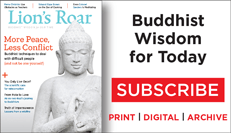
New research explores benefits of Buddhist practice in virtual reality
Buddhist teacher Andrew Holecek says virtual reality, just like
lucid dreaming, could be an opportunity to investigate the mind — or it
could be “super samsara.”
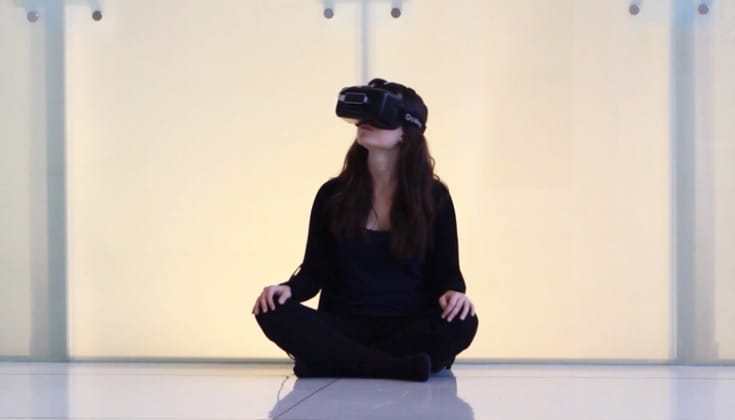
Researchers at MIT’s Media lab have conducted research on mindfulness practice in virtual reality. Video screen grab by Judith Amores.
What do dreams and video games have to do with Tibetan Buddhism? For
one thing, they all introduce us to “dereification” — the creeping
feeling that reality isn’t as solid as we might think. For another, they
will all come together at a workshop
led by Buddhist teacher and lucid dreaming expert Andrew Holecek at
Shambhala Mountain Center next week, where new research on the subject
will be unveilled.
Holecek will explore “dream yoga,” the Tibetan Buddhist practice of meditating in a lucid dream. In his 2016 book, Dream Yoga: Illuminating Your Life Through Lucid Dreaming and the Tibetan Yogas of Sleep,
Holecek blended traditional Buddhist teachings with modern sleep
science research. Now he’s looking at how to further incorporate Western
knowledge with the ancient tradition by exploring the potential of
virtual reality.
Earlier this year, Holecek was approached by researchers from Naropa University’s Cognitive Affective Science Lab.
The researchers were studying the relationship between lucidity — the
ability to differentiate between what is real and unreal — and emotions.
They hypothesized that people with greater lucidity would have a better
relationship with their emotions. To test the hypothesis, they
recruited research participants with a predisposition to lucidity,
including lucid dreamers like Holecek. Then they put the participants in
uncomfortable situations using virtual reality and observed the
participants’ responses.
“When you slip between these two realities — virtual reality and reality — you have a hard time determining which one is real.”
Virtual reality (VR) is a burgeoning field of technology that uses a
headset to immerse the user in a digital environment. It’s popular for
entertainment and video games, but innovators are seeing potential for
it in other fields — including Buddhism.
At Holecek’s workshop, the researchers from Naropa will present on
their findings and invite attendees to participate in their research.
Holecek envisions many more opportunities for collaboration between
Buddhists and VR developers.
“Virtual reality, like lucid dreams, can either wake us up to the
nature of reality, or pull us further into delusion,” he says. “How do
you use it for the purpose of awakening? How can we use cyberspace as a
lab for exploring the mind?”
For Holecek, this directly parallels lucid dreaming.
“Virtual reality either leads to a dystopian worldview or it leads to
a path of awakening. If we don’t take control over these technologies —
just like non-lucid dreams — they will take control over us. That’s the
definition of non-lucidity. That’s super-samsara.”
“There’s a lot of confluence with Buddhist thought,” says Holecek.
“We can use these technologies in a way that wakes us up instead of
hurling us deeper down the rabbit hole.”
In a feature on dream yoga in Buddhadharma: The Practitioner’s Quarterly,
Holecek explained that in lucid dreaming you can watch objects shift
shapes, and also confront your nightmares — both of which can help you
discern reality from illusion in your waking life. But the vividly real
experience of VR can have a dangerous side. In the case of VR, the
illusion of realism is known as “presence,” and Holecek thinks it can be
problematic.
If we engage with virtual reality and lucid dreams mindfully, Holecek says, we can discover wisdom.
“Cyberspace can be disembodied headspace,” says Holecek. “Presence in that regard is cognitive presence. It’s the same type of presence you can have when you’re in a lucid dream.”
If you get too attached to cognitive presence, you lose touch with
your body and your world. When you’re strongly attached to that
immersive virtual reality and then take off your headset, the experience
can be quite jarring — your sense of reality and illusion is shaken.
“When you slip between these two realities — virtual reality and
reality — you have a hard time determining which one is real. When you
come out of that experience, your world is dereified. It doesn’t really
feel all that great. That is the experience of ego being threatened.
It’s a very powerful intimation of teachings on emptiness.”
On the flip side, if we engage with virtual reality and lucid dreams
mindfully, says Holecek, we can discover wisdom. In his book on dream
yoga, Holecek quotes Tarthang Tulku Rinpoche to explain:
“Experiences we gain from practices we do
during our dream time can be brought into our daytime experience. For
example, we can learn to change the frightening images we see in our
dreams into peaceful forms. Using the same process, we can transmute
negative emotions we feel during the daytime into increased awareness.”
Holecek sees the same potential for virtual reality, and he hopes to
parlay that vision into a virtual reality program that teaches the
principles of dream yoga. He theorizes that it could serve as a learning
aid, so practitioners could more easily learn to wake up and practice
meditation in their dreams. Next week, he’ll meet with Tibetan Buddhist
lamas to ask for their blessing and their counsel.
Holecek isn’t the first Buddhist to see an overlap between Buddhist practice and VR. Researchers at MIT have studied how virtual reality could be used in mindfulness training. And, in an article in Lion’s Roar magazine,
Vincent Horn — cofounder of Buddhist Geeks and Meditate.io — argued
that virtual reality posts a challenge for Buddhists to build digital
technology that empowers wisdom and helps users practice the dharma.
https://www.brainyquote.com/topics/augmented_reality
Augmented Reality Quotes
Augmented Reality Quotes
I’m excited about Augmented Reality because unlike Virtual Reality,
which closes the world out, AR allows individuals to be present in the
world but hopefully allows an improvement on what’s happening presently.
Tim Cook
Excited, Which, Virtual
Virtual reality and augmented reality will change the way we shop.
Michio Kaku
Will, Virtual, Shop
Neural implants could accomplish things no external interface could:
Virtual and augmented reality with all five senses; augmentation of
human memory, attention, and learning speed; even multi-sense telepathy -
sharing what we see, hear, touch, and even perhaps what we think and
feel with others.
Ramez Naam
Memory, Virtual, Neural
Augmented reality will take some time to get right, but I do think that it’s profound.
Tim Cook
Think, Will, Some
When you drill down, blockchains are really a shared version of reality
everyone agrees on. So whether it’s a fully immersive VR experience,
augmented reality, or even Bitcoin or Ethereum in the physical world as a
shared ledger for our ‘real world,’ we’ll increasingly trust
blockchains as our basis for reality.
Fred Ehrsam
Trust, Shared, Increasingly
Social media companies must combine their mastery of the latest in
real-time, location based or augmented reality technologies in the
service of clear and consistent storytelling.
Simon Mainwaring
Storytelling, Social, Based
Augmented reality is the ‘boy who cried wolf’ of the post-Internet
world - it’s long been promised but has rarely been delivered in a
satisfying way.
Om Malik
Wolf, Been, Delivered
I do think
that fashion may end up being the ‘killer app’ for wearable augmented
reality systems. This is in part because it’s not simply task-oriented -
like finding a restaurant or where your friend is currently lounging
about - but experience-oriented. It becomes part of your life.
Jamais Cascio
About, Your, Part
I feel in love with holography, which is that you don’t have to wear
anything or carry anything. It is augmented reality, if you will.
Mary Lou Jepsen
Love, Will, Which
It seems to me so much technology could be applied to entertainment.
Augmented reality, and even just the iPad - touch-screen technology, it
was, you know, it still is extremely underused by entertainment.
Justine Bateman
Still, Could, Applied
QR codes have always been a kind of half-measure, a useful but
inelegant transitional technology; the ultimate goal is augmented
reality.
Om Malik
Always, Codes, Ultimate Goal
For true
augmented reality, the display would have to dynamically focus, which
would require additional hardware on the glasses to read your eye.
Pranav Mistry
Augmented Reality Brings Kyoto’s Oldest Zen Temple into the Future
https://www.buddhistdoor.net/news/augmented-reality-brings-kyotorsquos-oldest-zen-temple-into-the-future
Augmented Reality Brings Kyoto’s Oldest Zen Temple into the Future
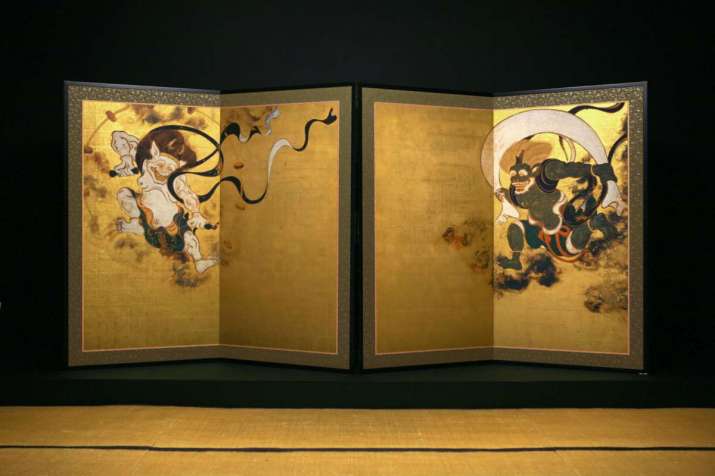
Kennin-ji,
the oldest Zen temple in Kyoto has taken a step into the 21st century
with last week’s launch of the “MR Museum.” The new digital experience
offers visitors a unique new way to view and interact with the temple,
by turning static art into a living, moving holographic narrative
through the application of mixed, or augmented, reality (MR) that
includes a holographic Buddhist monk who provides an educational
commentary.
Using 3D digital
imagery and HoloLens headsets, Tokyo-based hakuhodo-VRAR, a company
specializing in virtual and augmented reality technologies, uses MR to
bring an added dimension to the spectacular and highly influential byobu folding screen Wind God and Thunder God, a 17th century national treasure created by the renowned artist Tawaraya Sotatsu (c. 1570–c. 1640).
“The
folding screen of Fujin and Raijin is Japan’s most famous national
treasure, and we’ve used HoloLens MR technology to enable people to
‘feel’ the concept of a bountiful harvest that the work depicts, rather
than just view it,” said hakuhodo executive creative director Kazuhiro
Suda. “By overlaying the wind and rain brought by the gods of wind and
thunder around the double screen, we’ve attempted to communicate what
the artist had in mind to those viewing this masterpiece.” (Next
Reality)
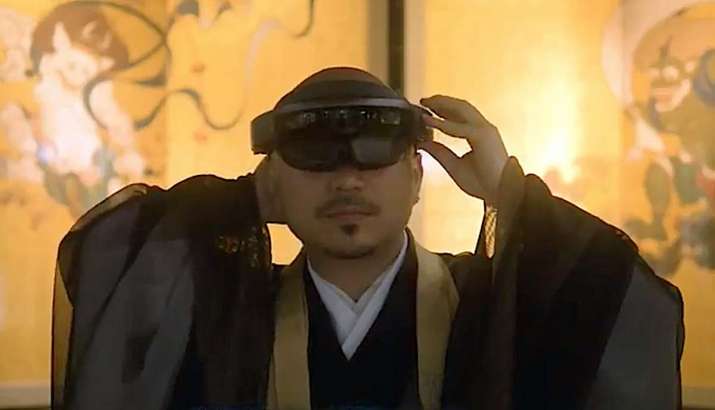
Kennin-ji monk Shundo Asano, whose image was used for the MR experience, dons a HoloLens headset. From youtube.com
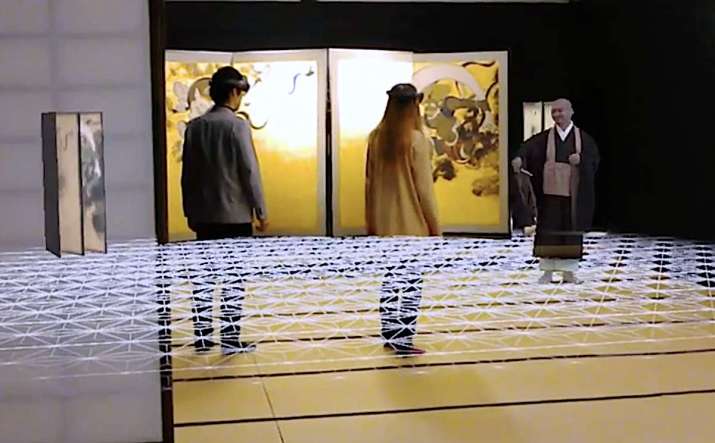 he holographic narrative provides visitors with a
he holographic narrative provides visitors with a
new way to experience and understand Sotatsu’s 17th century masterpiece.
From youtube.com
Wind God and Thunder God,
housed at Kennin-ji, comprises a pair of bi-folded screens, each
measuring 169.8 centimeters by 154.5 centimeters, and depicting Raijin,
the Shinto god of lightning, thunder, and storms, and Fujin, the god of
wind, both rendered in ink and color on gold-foiled paper.
The
holographic narrative provides visitors with a new way to experience
and understand Sotatsu’s 17th century masterpiece, and the stories
behind its creation, all under the guidance of a holographic Kennin-ji
monk.
According to Microsoft,
which developed the HoloLens technology: “Viewers will be immersed in a
totally new way of experiencing cultural treasures as they are drawn
into a dynamic graphic narrative featuring rainclouds alive with
lightning and thunder, a lush Earth below, a vast cosmos, and other
motifs. The advanced viewing experience also includes 3D renditions of
works on the same Fujin and Raijin theme by Ogata Korin, Sakai Hoitsu
and other artists of the Rinpa school who were inspired by Tawaraya
Sotatsu, enabling viewers to compare the works.” (Mobile Nations)
“I think
it’s really wonderful to be able to experience this national treasure,
the folding screen of Fujin and Raijin in this way,” said Buddhist monk
Shundo Asano, whose image was used for the MR experience. “But I must
admit, I never imagined myself being captured in 3D in this way.” (Next
Reality)
The MR holographic
narrative at Kennin-ji ran from 22–24 February and continues at Kyoto
National Museum from 28 February–2 March.
Founded
in 1202, Kennin-ji, a major temple of the Rinzai school of Zen
Buddhism, is considered one of the five most important Zen temples in
Kyoto. The monk Eisai (1141–1215), who is credited with introducing both
Zen Buddhism and green tea to Japan, was the temple’s founding abbot
and is buried within the grounds. A combination of Zen, Tendai, and
Shingon practices were conducted at the temple in its early years, but
Kennin-ji became a purely Zen temple under its 11th abbot, the Chinese
monk Lanxi Daolong (1213–1278). The renowned Zen master Dogen
(1200–1253), who went on to found Soto Zen, also trained at Kennin-ji.
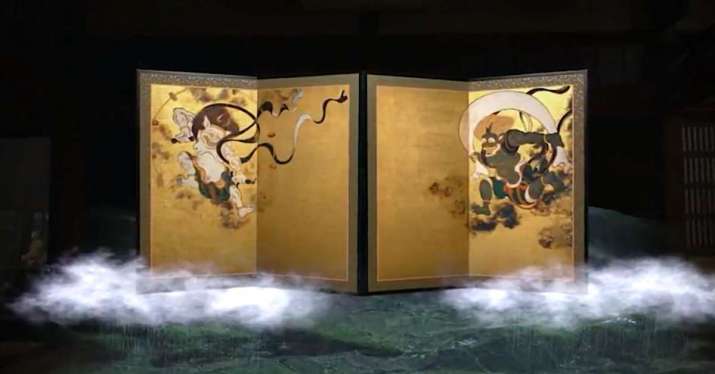 The digital experience provides an immersive new medium for learning about cultural treasures. From youtube.com
The digital experience provides an immersive new medium for learning about cultural treasures. From youtube.com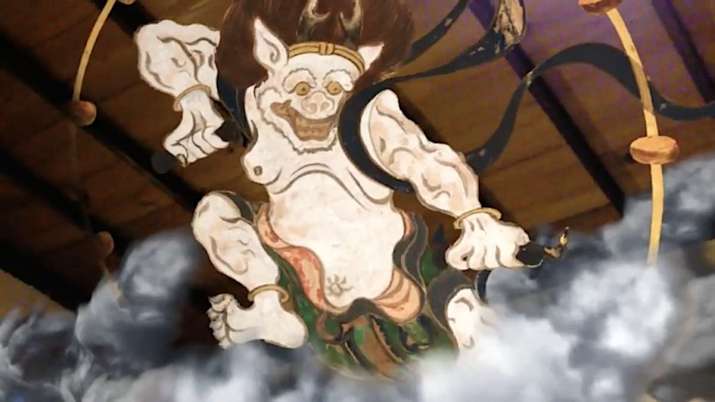 Augmented reality helps explain the background and inspiration behind the art. From youtube.com
Augmented reality helps explain the background and inspiration behind the art. From youtube.comSee More
The Oldest Zen Temple in Kyoto Kenninji
HoloLens adds mixed reality to a Japanese national treasure (engadget)
Japanese lab uses HoloLens to help people learn about art (on MSFT)
HoloLens to help bring Japanese national treasure to life with mixed reality (Mobile Nations)
Microsoft’s HoloLens Transports One of Japan’s Oldest Temples into the Future in Kyoto (Next reality)
Related news from Buddhistdoor Global
Ancient Masterpieces of Buddhist Art at Tokyo National Museum
Japanese Monk Promotes Cleaning as a Path to Well-being
Japan’s Historic Todai Temple Offers Relief for Families Living with Serious Illness
Latest Buddhist Gadget from Japan: a Fish-shaped Karaoke System for the Heart Sutra
Japanese Chef Campaigns to Preserve and Share the Buddhist Dining Tradition of Shojin Ryori
2594 Tue & 2595 17 & 18 Apr 2018 LESSON
https://m.youtube.com/watch?v=HprQbTlYHuQ
AR 101: The Basics of Augmented Reality
Published on Dec 16, 2016What exactly is augmented reality? Senior Writer Jonathan Strickland explains what AR is all about and how using digital information in the physical world can transform reality around you.
Category
https://m.youtube.com/watch?v=I3R8FV60vgI
Buddha Virtual Reality Demo Video Augmented Reality Demo
https://haptic.al/virtual-reality-meets-tibetan-buddhism-d06f28dde66e
Virtual reality meets Tibetan Buddhism
Your weekly guide to Virtuality — Newsletter #65
https://cdn-images-1.medium.com/max/1600/1*zL39RQ9oA2V3PlqkonbeGA.jpeg
What do dreams and video games have to do with Tibetan Buddhism? For one thing, they all introduce us to “dereification” — the creeping feeling that reality isn’t as solid as we might think. Buddhist teacher Andrew Holecek says virtual reality, just like lucid dreaming, could be an opportunity to investigate the mind — or it could be “super samsara.” Read more on Lion’s Roar.
https://m.youtube.com/watch?v=yWYn5xvqsQI
The power of Augmented Reality & Computer Vision - Blippar’s latest tech breakthroughs
https://m.youtube.com/watch?v=D-A1l4Jn6EY
Augmented Reality - Explained by Common Craft
https://www.ted.com/talks/nadine_hachach_haram_how_augmented_reality_could_change_the_future_of_surgery/up-next
How augmented reality could change the future of surgery
